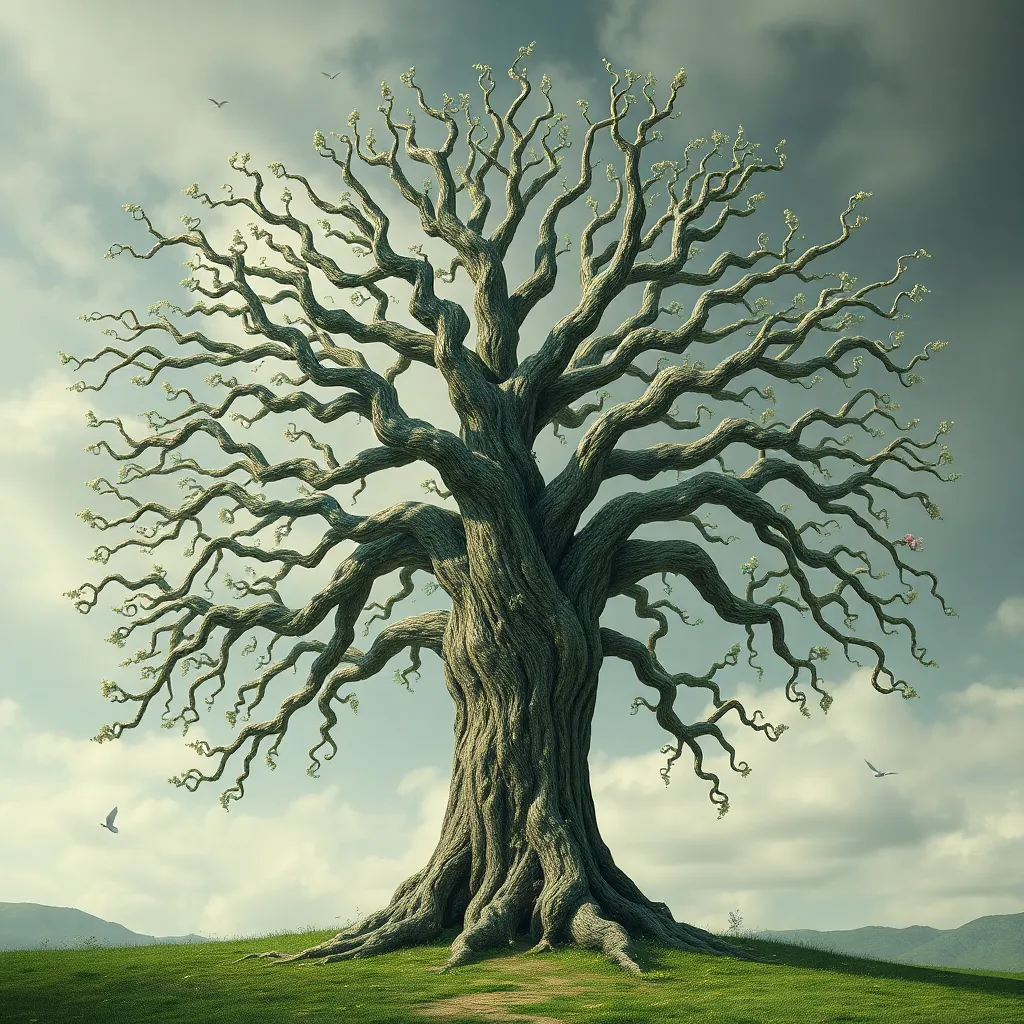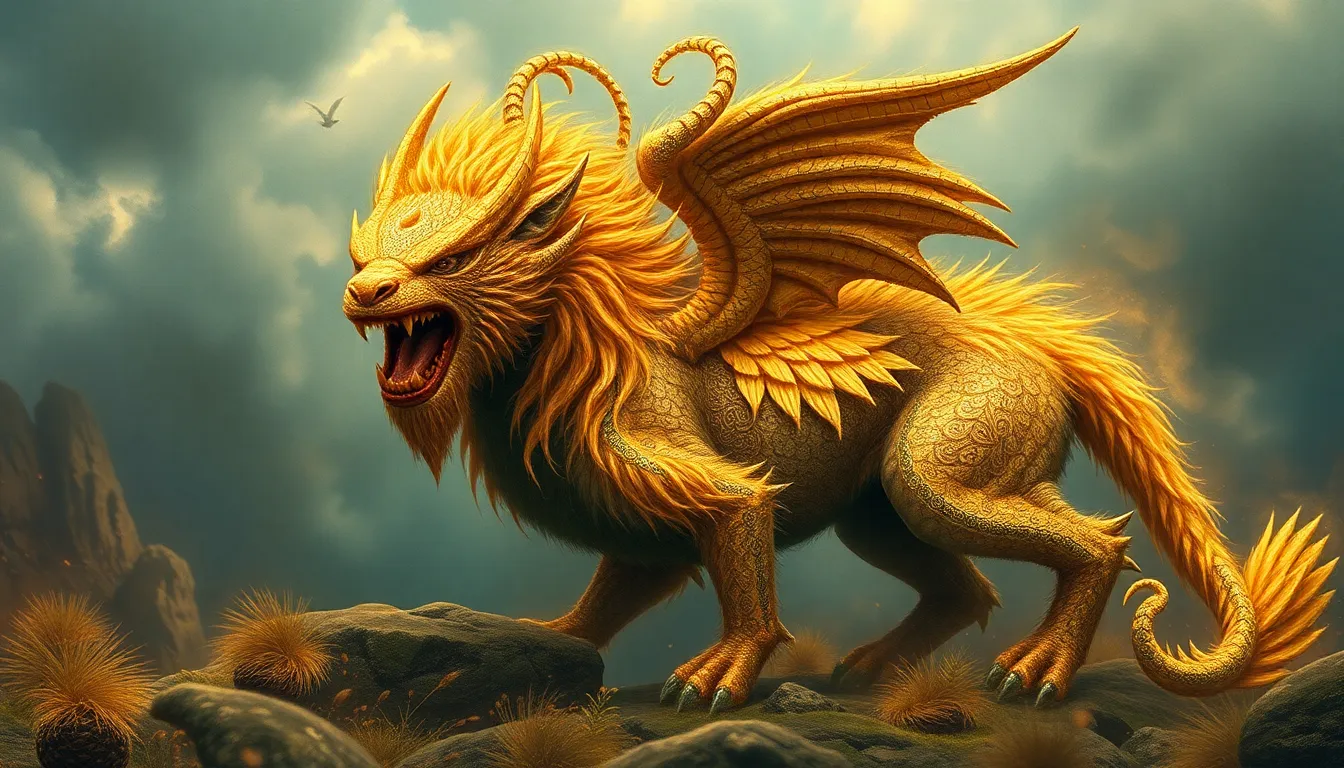The Celtic World Tree in Literature and Art: Depictions of the Mythic Tree
I. Introduction
The concept of the World Tree is a profound element in Celtic mythology, representing the interconnectedness of all life and the cosmos. It serves as a symbol of growth, strength, and the cyclical nature of existence. In various cultures, including the Celts, the World Tree is an archetype that embodies a bridge between the earthly realm and the spiritual world.
The significance of the World Tree extends beyond mere folklore; it permeates cultural narratives, influencing art, literature, and spiritual practices. The roots of this tree delve deep into the earth, while its branches reach toward the heavens, symbolizing the unity of opposites and the potential for transformation.
This article aims to explore the historical context, literary representations, artistic depictions, and modern influences of the Celtic World Tree, highlighting its enduring legacy in both ancient and contemporary societies.
II. Historical Context of the World Tree in Celtic Mythology
The origins of the World Tree concept in ancient Celtic beliefs can be traced back to their deep reverence for nature and the spiritual significance they attributed to trees. The Celts viewed trees as sacred beings, with the oak, ash, and yew being particularly noteworthy in their mythology.
Symbolism of trees in Celtic culture is multifaceted; they represent life, death, and rebirth, reflecting the cyclical patterns of nature. The Celts believed that trees were living entities that housed spirits, and thus they played a crucial role in their spiritual and daily lives.
Connections to other mythological world trees globally reveal a shared human fascination with the concept of a central tree connecting different realms. For instance, the Norse Yggdrasil and the Hindu Ashvattha tree exhibit similar roles in their respective mythologies, demonstrating the universal significance of such motifs across cultures.
III. The World Tree in Celtic Literature
Key texts featuring the World Tree offer a window into the ways these narratives have shaped and reflected Celtic culture. In “The Mabinogion,” an important collection of Welsh tales, the themes of transformation and interconnection are prevalent, with trees often acting as portals between worlds.
- “The Mabinogion”: This collection includes stories where trees play significant roles, often embodying wisdom and the passage of time.
- “The Book of Kells”: This illuminated manuscript features intricate depictions of trees intertwined with Christian themes, symbolizing the fusion of pagan and Christian beliefs.
In these works, the World Tree is not merely a backdrop but a central character in the unfolding narratives, embodying the themes of growth, continuity, and the sacredness of nature.
IV. Artistic Representations of the World Tree
Artistic depictions of the World Tree, both ancient and contemporary, showcase the deep-rooted connection between art and mythology. From Celtic knots to elaborate carvings, the visual representations often encapsulate the essence of the World Tree as a symbol of life and connection.
Notable artists and works featuring the World Tree include:
- Alfred Williams: His illustrations reflect the intertwining of nature and spirituality.
- Modern Celtic artists: Many contemporary creators draw inspiration from Celtic symbolism, reinterpreting the World Tree in modern contexts.
Symbolic interpretations in visual art often highlight the duality of existence, where the roots signify the past and the branches reach toward the future, encapsulating the continuity of life.
V. The World Tree in Folklore and Oral Traditions
The role of storytelling in preserving the World Tree mythos cannot be overstated. Oral traditions have been vital in transmitting these narratives through generations, adapting them to reflect contemporary values and beliefs.
Variations of the World Tree narrative exist across different regions, showcasing the flexibility and resilience of these stories. Modern adaptations often reinterpret the World Tree, aligning it with ecological concerns and contemporary spirituality.
VI. Comparative Analysis with Other Cultural World Trees
A comparative analysis reveals intriguing similarities and differences between the Celtic World Tree and other cultural world trees. For example:
- Yggdrasil in Norse mythology: Both trees serve as central axes connecting various realms, yet Yggdrasil is more focused on fate and destiny.
- Axis Mundi: Found in various mythologies, the Axis Mundi represents the connection between heaven and earth, a concept shared with the Celtic World Tree.
The universal significance of world trees in folklore emphasizes a collective human understanding of life’s interconnectedness and the need for balance within the cosmos.
VII. The Modern Influence of the Celtic World Tree
In contemporary culture, there has been a revival of interest in Celtic mythology, with the World Tree emerging as a powerful symbol in various contexts. Modern literature and art often reflect these themes, incorporating the World Tree into narratives that address current societal issues.
The impact on neo-pagan and spiritual practices is also noteworthy, where the World Tree is embraced as a symbol of holistic living and environmental consciousness. Rituals and ceremonies often incorporate elements of the World Tree, connecting practitioners to their ancestral roots.
VIII. Conclusion
In summary, the World Tree’s significance in literature and art is profound, reflecting deep cultural values and beliefs. Its enduring legacy speaks to the human experience, illustrating themes of connection, transformation, and reverence for nature.
As we reflect on the World Tree’s presence in contemporary society, it becomes clear that its symbolism continues to resonate, inviting further exploration and understanding. Future research could delve into its role in modern spiritual movements, ecological narratives, and the ongoing relevance of myth in a rapidly changing world.



